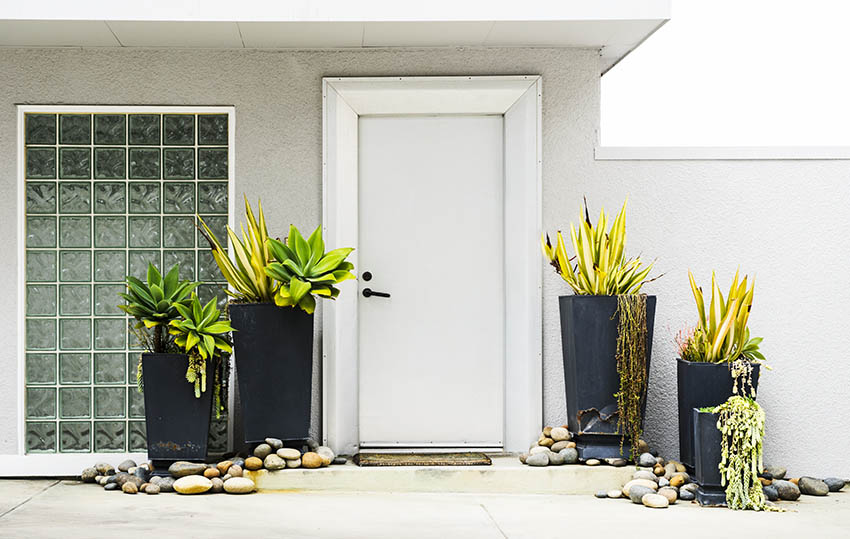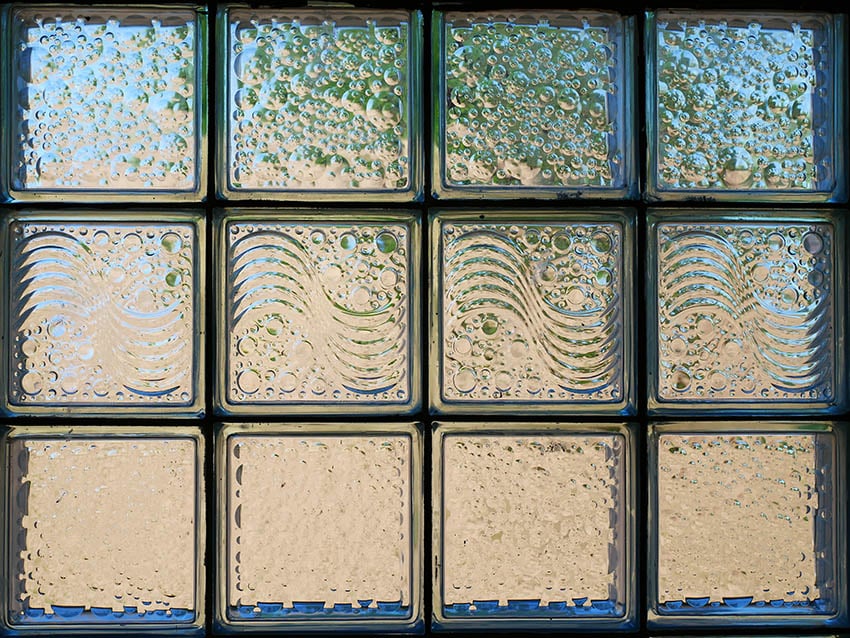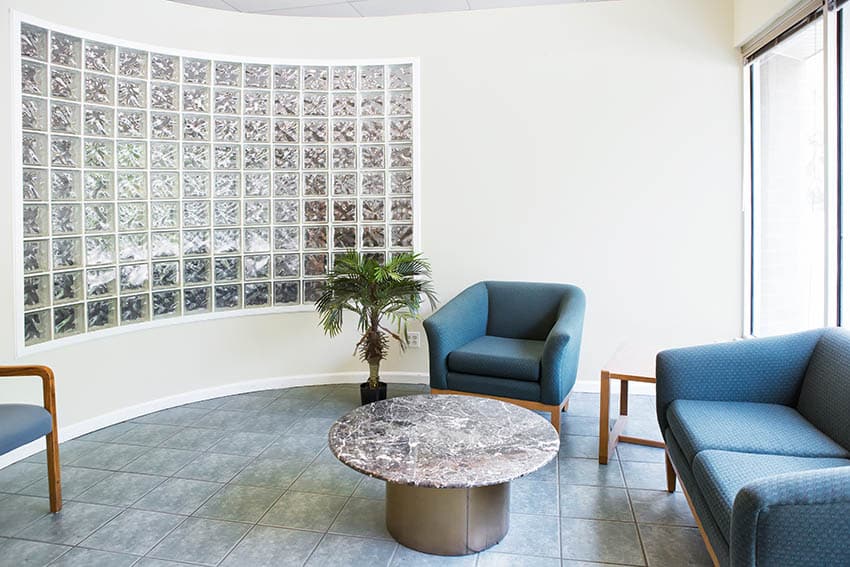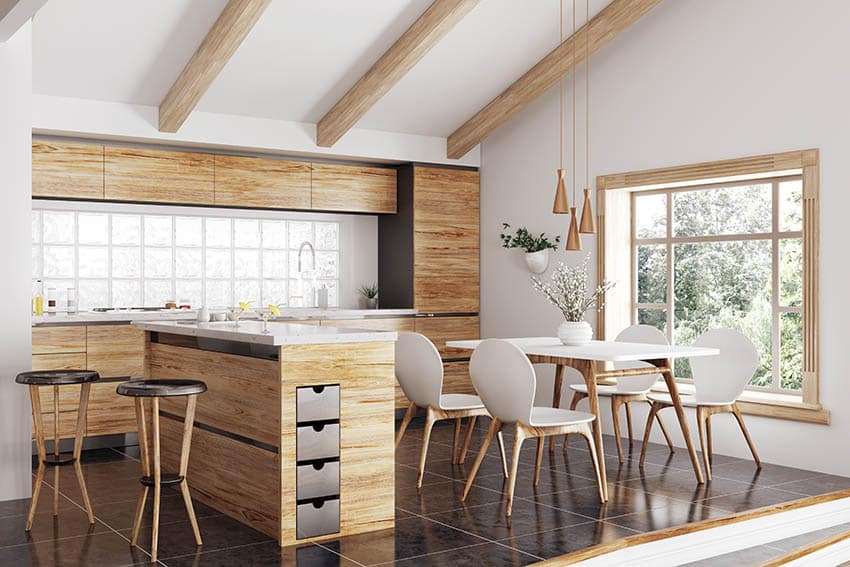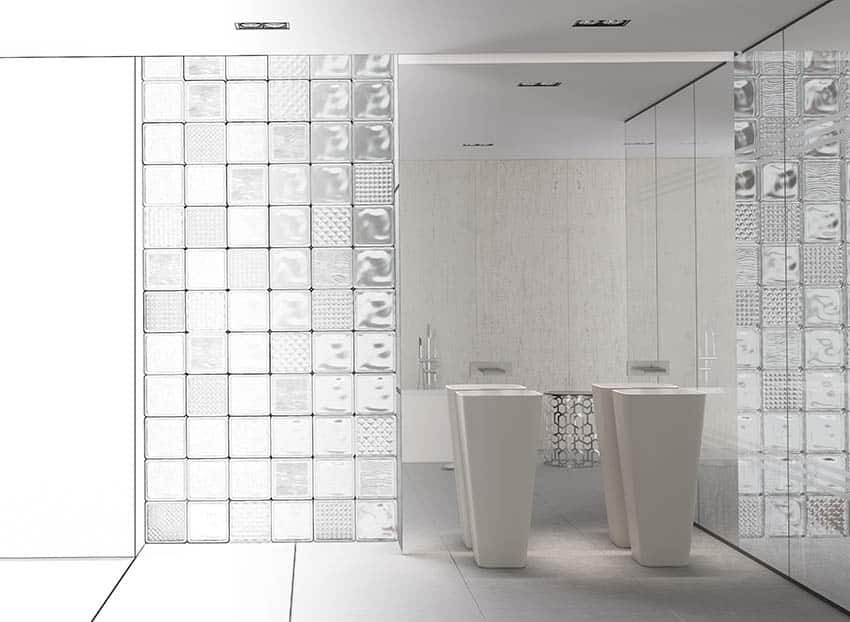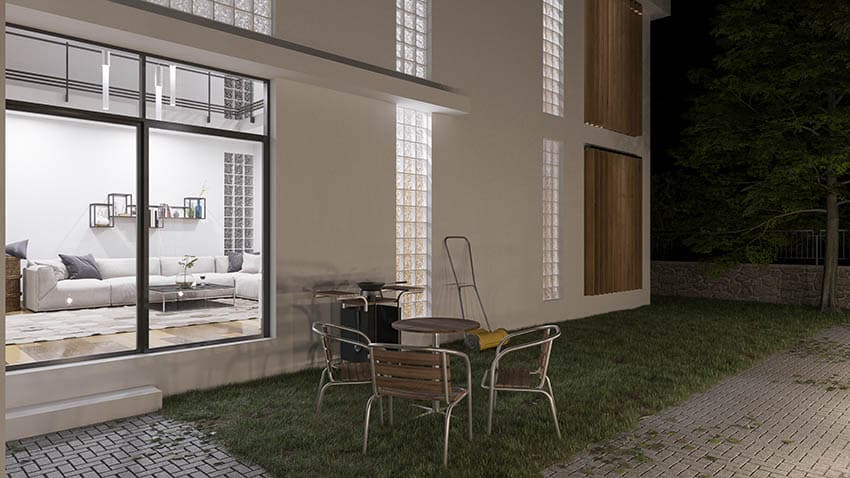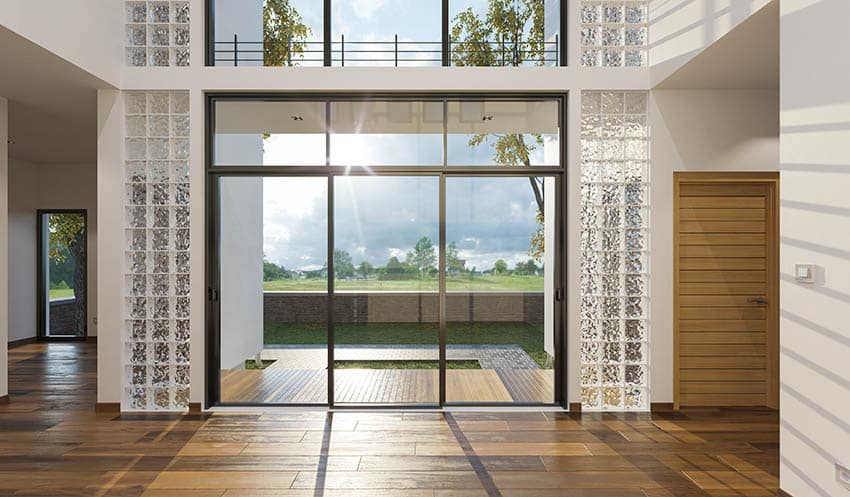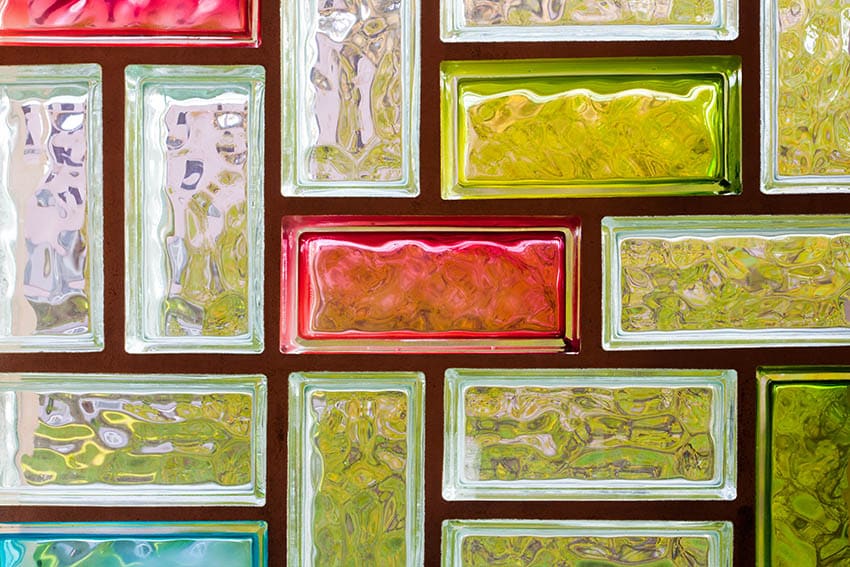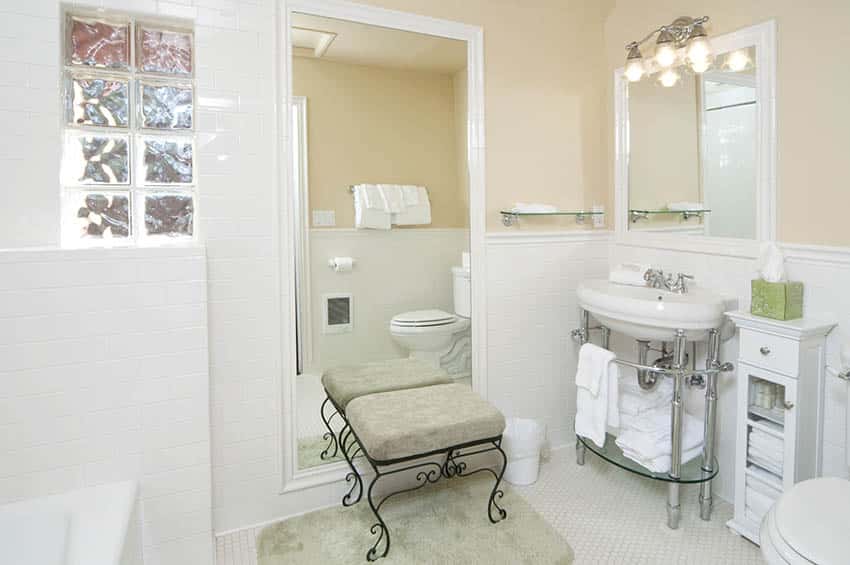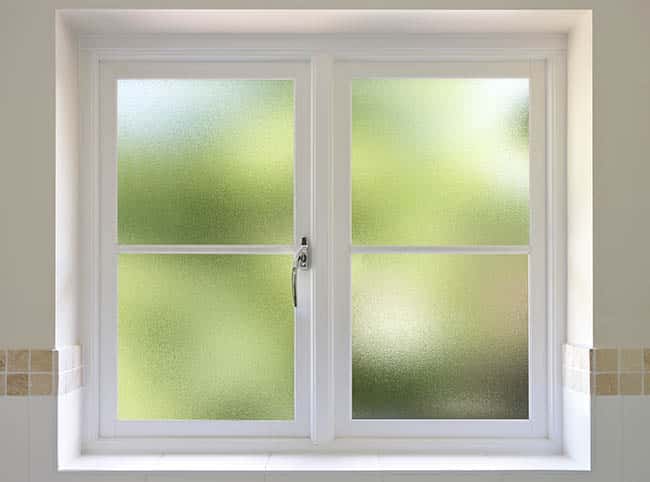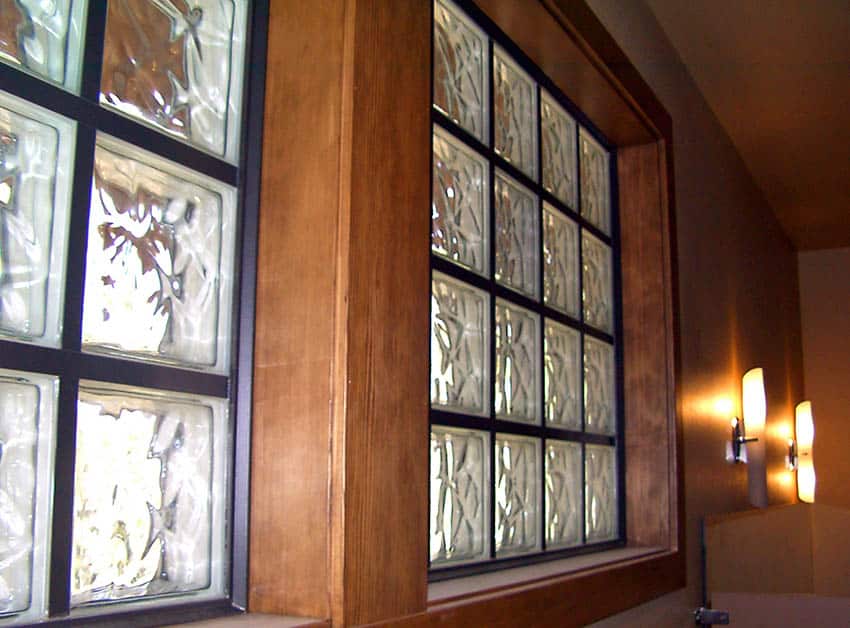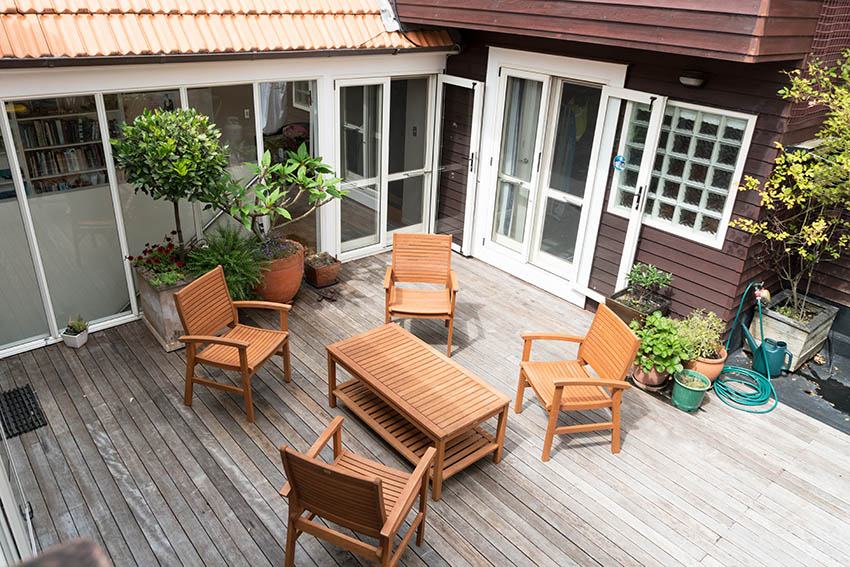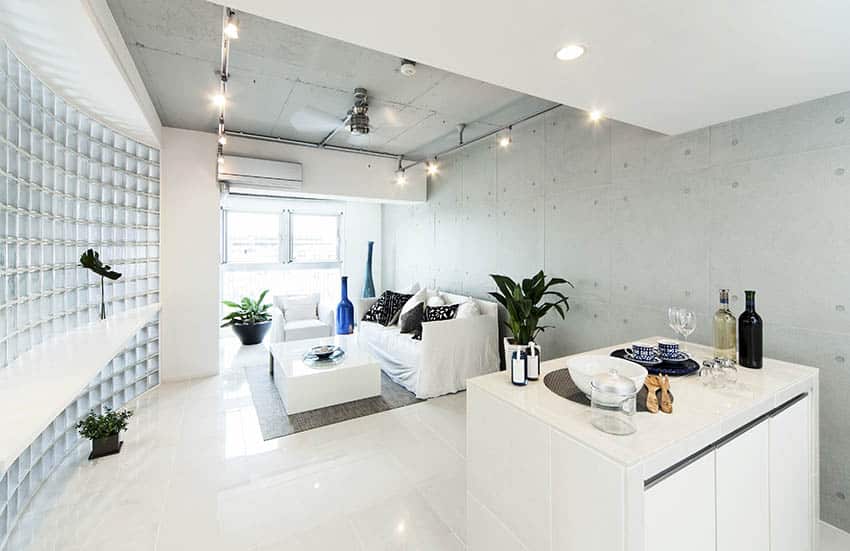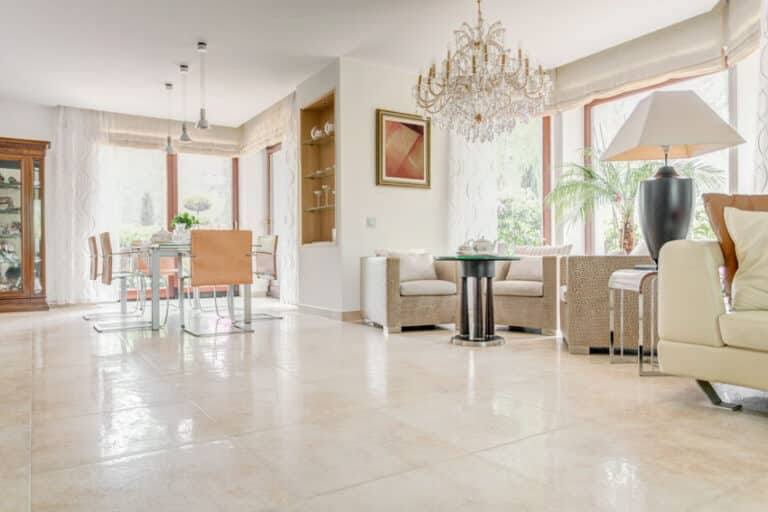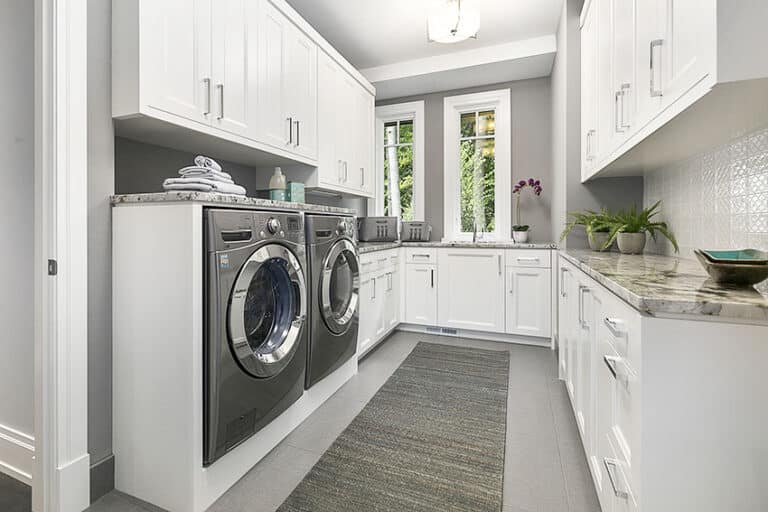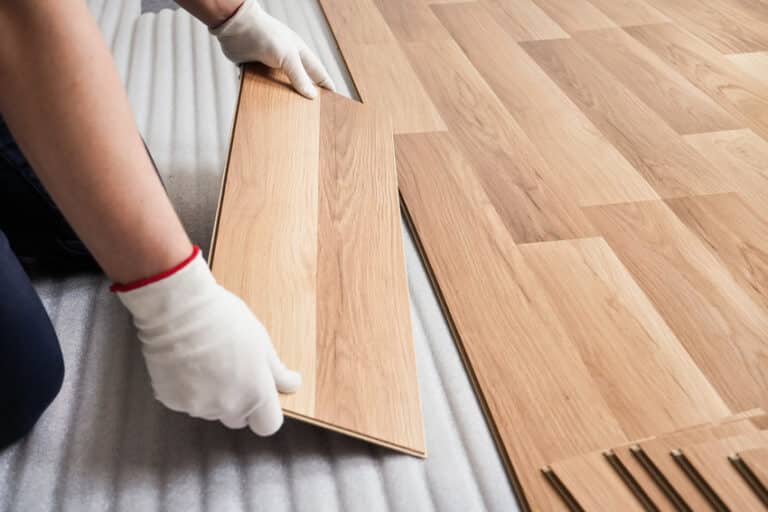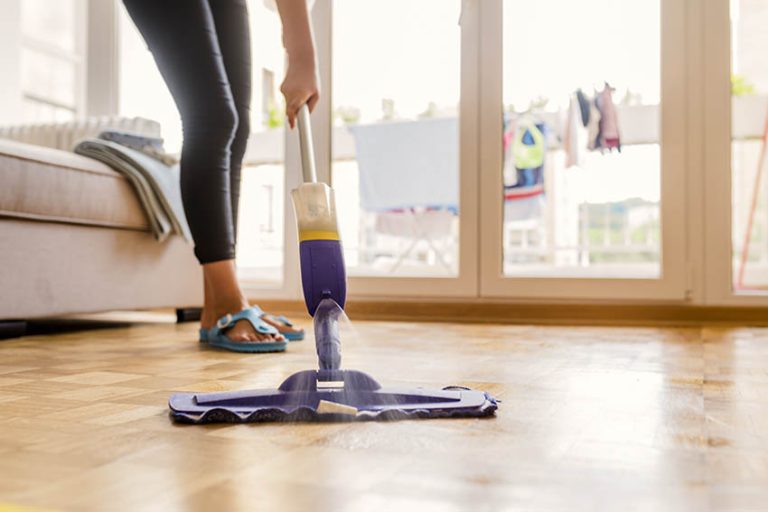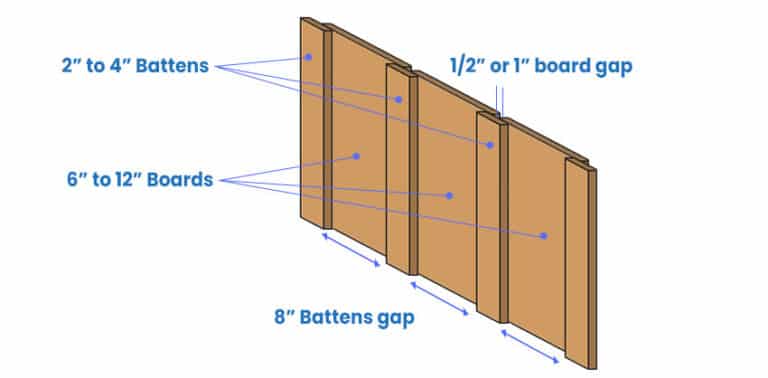Types Of Glass Block Windows With Sizes And Designs
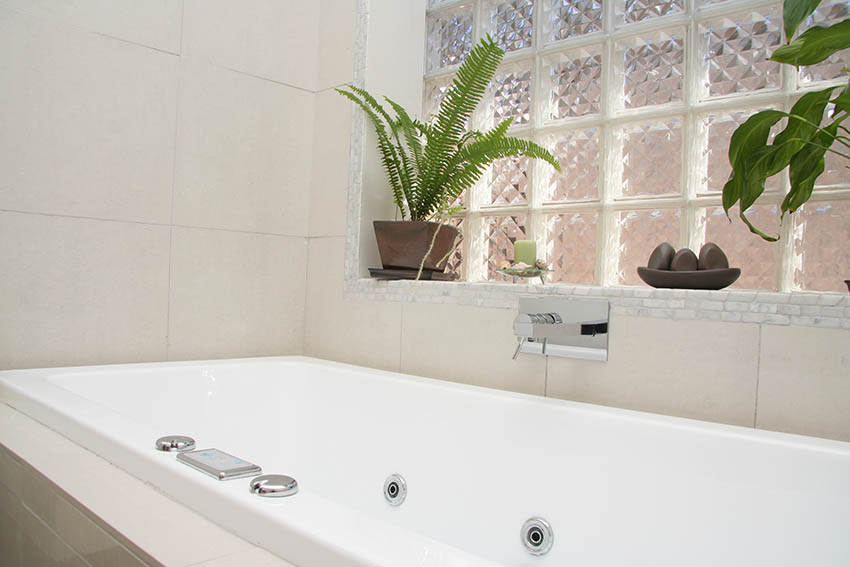
Glass block windows were popular in the 1980s but overlooked until today as they are again in the spotlight. Also known as glass bricks, these glass blocks allow homeowners to enjoy outside light while maintaining privacy and adding a sophisticated ambiance. Glass block windows have taken on a fresh, modern transformation and are used as exterior windows and inside partition walls, bathrooms, and skylights. Many options are available when considering glass block windows, including size, colors, and designs. This design guide provides the information you need to decide if glass block windows are a good option for your home and how to plan for installing and using glass blocks.
What Are Glass Block Windows?
The original glass block windows were a mouth-blown glass used during the 1800s to allow light in underground storage cellars. They could be found on ships, also creating a light source permeable to water. These primitive glass blocks were single panes of glass and without durability. In 1907, Friedrich Keppler engineered a process to use concrete frames for glass blocks, giving these windows more strength.
By 1935, Corning GlassWorks improved the glass block window by joining two equally sized pieces to create a double-sided hollow block called the Corning-Steuben block. These blocks were lighter, let in more light, insulated better, and were hurricane-proof. This original design is still used to make glass block windows today.
Glass blocks are translucent, and like masonry, they add security to any home. These windows work well where ventilation is unnecessary, and additional light, such as in a garage or as an extra window, is installed by a shower, bath, or Jacuzzi. They can be transparent or frosted, depending on the level of privacy needed.
Homeowners who want to use glass blocks to create an inside divider can purchase the blocks or premade panels and install them, but professionals should install glass block windows. Visit this page for different types of windows.
Glass Block Window Sizes
Glass blocks themselves are typically 2 to 3-inches thick and come in many sizes, colors, and designs to create anywhere from a standard window to an ornate divider or accent piece.
The commonly used glass bock is 3-inches thick to fit most existing window openings and provide the most sizes. Glass block window sizes depend on the block’s size and the area where the window will be installed.
Glass blocks made for windows are commonly 8” x 8” square. The standard window size is 32” wide by 16” tall, such as a basement block window. Some manufacturers create glass blocks with sizes including 6” x 6” and 4” x 4”. The window opening size for a new build can be tailored by using a particular-sized block.
Mixed glass block sizes are used when creating an artistic design such as a room divider or designing a window using equally dividable blocks such as 8” and 4” blocks.
The chart below includes a sampling of standard glass block window sizes. Sizes do not include an allowance for mortar or rods. Below this chart are several formulas used to calculate a glass block window’s actual size with allowances for mortar rods.
Standard Block Window Sizes
| Glass Block Size in Inches | Sample Square Window Sizes in Inches | Sample Rectangular Window Sizes in Inches |
| 6 x 6 | 12 x 12
18 x 18 24 x 24 30 x 30 36 x 36 |
|
| 8 x 8 | 16 x 16
24 x 24 32 x 32 40 x 40 48 x 48 |
|
| 12 x 12 | 24 x 24
36 x 36 48 x 48 60 x 60 72 x 72 |
|
| Rectangle | Width x Height | |
| 4 x 8 | 8 x 16
12 x 24 16 x 32 20 x 40 24 x 48 |
|
| 6 x 8 | 12 x 16
18 x 24 24 x 32 30 x 40 36 x 48 |
How to Calculate Sizes
Glass blocks cannot be cut to size as tile can. The most critical step in creating a glass block window is to know the window size, which also determines the rough opening size.* The formula is below. (Note: *Always work with a window representative to ensure the proper-sized window.)
The formula works by taking the glass block’s dimension and adding the joint width, made from mortar or a rod, and then adding one more joint width to determine the window size and opening.
*These are simple numbers. Actual block and joint sizes will be different.
Square Block Size Chart
| FORMULA – SQUARE GLASS BLOCK WINDOWS: | ||
| WIDTH AND HEIGHT | Sample Window | Sample Window |
| Dimension of the glass block: | 6” | 8” |
| Width of the joint: | .5” | .5” |
| Total width: | 6.5” | 8.5” |
| Multiply by the number of blocks: | #6 | #6 |
| Total width: | 39” | 51” |
| Add one more joint width: | .5” | .5” |
| Actual square width and height window opening: | 39.5” | 51.5” |
Rectangular Block Size Chart
| FORMULA – RECTANGLE GLASS BLOCK WINDOWS: | ||
| HEIGHT ONLY | Sample Window | Sample Window |
| Dimension of the glass block: | 6” | 8” |
| Width of the joint: | .5” | .5” |
| Total width: | 6.5” | 8.5” |
| Multiply by the number of blocks: | #12 | #12 |
| Total width: | 78” | 102” |
| Add one more joint width: | .5” | .5 |
| Actual height for window opening: | 78.5” | 102.5” |
*Use the width formula above for the width of the rectangular window.
Glass-Block Cost
Glass block windows will cost more than regular pane windows but offer more benefits, such as privacy while allowing natural light, better insulation, durability, extra security, and design elements.
Single glass blocks average $15 each, up to $50 for colored, frosted, etched, or irregular shaped blocks. The national average for one glass block window with installation is $500 with a range of $400 to $1,100 depending on size and options such as color and design.
One 14” x 24” pre-built glass block window averages $350, and the labor cost to install is $350, costing a total of $700. Frosted glass blocks cost more, as do color, etched, or special designs.
Many homeowners use pre-built block windows, which saves money for the cost of a custom-built window. Pre-built also provides a tighter seal.
Glass-Block Material Window Designs
Privacy is a common reason homeowners install glass block windows. Glass block provides plenty of light in bathrooms that may only have one small window. It’s found along the walls of a bathtub or Jacuzzi, in the shower as a corner element, and even as a skylight.
These windows can start from almost floor level to just short of the ceiling in broad sections, adding a dramatic effect to a dining area or living room. In a kitchen, glass block windows work well when living in a home or condo with windows facing a building. The blocks keep neighbors from seeing in while illuminating the kitchen area.
Often, homeowners use glass blocks for front door-side windows. They add appeal to the home’s entryway and provide light for the foyer while maintaining privacy and security.
Exterior Glass-Blocks
Glass block windows are great as replacement windows, especially on the front of a home that is located either close to a street or in a busy neighborhood. By creating interesting combinations of sizes, shapes, and designs, these windows add visual appeal to the home while including their benefits.
For homes with a southern-facing front, these blocks collect the heat between the two sealed layers of glass and hold the heat even after the sun goes down. This is a great energy saver in winter.
If a home is located in a warm climate with mostly sunny days, specially-made glass blocks have solar heat reduction properties and carry the ENERGY STAR® seal. Many of these blocks are energy efficient and made with sun-blocking glass to prevent the surface from fading or cracking from extreme temperatures.
Basement glass-block windows are secure and private and come with vents for air circulation if needed. A basement always needs extra light, and these windows save on the energy required to light a basement.
Modern Styles
Today, glass blocks come with stylish designs built into the surface, such as circles, waves, square patterns, swirls, and combined textures. Creating a window with mixed sizes and different patterns and changing the window’s overall shape makes for modern designs.
Glass blocks are not limited to squared-off shapes such as windows. Existing window cutouts on a home can be shaped to match a custom design. The combinations are limitless
Colored Glass
With the addition of colored blocks, windows are not limited to the typical frosted or etched glass. Windows on exterior walls complement a home’s design when a few random color blocks are added to exterior windows.
A sporadic color, such as a row of one color that matches the home’s colors or any other custom-picked color scheme, creates a focal point that accents the home’s look and appeal. Colored glass blocks also add artistic flair to bathrooms by interweaving color in the windows. Custom-colored blocks can be ordered to match the room’s décor.
Add some color to kitchen windows to tie together other décor elements while adding light to your workspace. Adding smaller features to your home with color is an inexpensive way to add a personal touch to your home’s decor. See more kitchen windows here.
Where to Use Block Style Windows
Basement Windows – These sturdy and durable windows provide much-needed light in a dark basement, providing security and moisture protection.
Bathroom Window – There’s no better way to add extra light to a bathroom than with glass block windows that provide privacy and natural light. However, be aware that glass blocks are not 100% private when it’s dark outside and the light is turned on.
Window in Shower – A shower typically has no window, and bathroom light fixtures are not appropriate to hang over a shower stall or bathtub where water and electricity don’t mix. These blocks in any design and size, are the best way to add light and even warmth in the shower.
Alternatives to Glass-Blocks
Glass block windows also come made from acrylics manufactured using innovative polymers with UV inhibitors included in the material. These acrylic blocks have little fading and yellowing and are much lighter than glass blocks. They’re also easier to install.
Another alternative is standard vinyl pane windows also come made with privacy glass, providing as much privacy as the blocks but without the strength or durability. These windows can be ordered with etched ornate designs to enhance their placement in bathrooms and kitchens or on front entrance doors.
Removing Glass-Blocks
To remove glass block windows for replacement windows or demolition (not to reuse), follow the steps below:
- Cover the inside of the glass block window with two layers of heavy plastic sheeting and secure with duct tape.
- Put on safety glasses, a dust mask, and heavy gloves.
- From the outside, remove any sealant over the mortar with a razor knife.
- Start in the top corner and begin breaking the blocks with a hammer.
- Break one block at a time until finished.
Can I Remove Glass-Blocks Without Breaking Them?
If the blocks will be repurposed in another window or as a decorative accent piece, follow the steps below to remove them without breaking.
- Use a razor knife to remove sealants covering the mortar on the inside and outside.
- Cover the outside of the window with plastic sheeting and secure it with duct tape.
- Wearing safety glasses, a dust mask, and gloves, use a masonry drill to drill holes close together in the mortar around all the blocks. Drill all the way through to the other side.
- Take a chisel and remove the rest of the mortar around the top left block. It should be loose enough to remove.
- Use the same method to remove each brick row by row and set them aside.
FAQ’s
Are Glass Style Blocks Outdated?
Glass block windows and home décor may trigger memories of the 70s or 80s; however, today’s blocks include artistic and functional creations.
These blocks come in many sizes, designs, and colors and come in different styles. A classy restaurant may have a front wall of 3D protruding blocks that provide light and art.
Many different block shapes allow window designs beyond squares and rectangles, such as rounded corners, 90-degree corners, double ends, corner angles, and Tridron units. These extra shapes also allow creative interior design pieces.
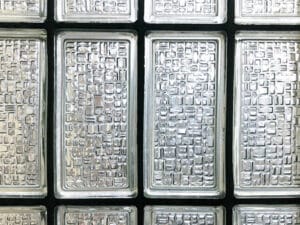
Are These Blocks Waterproof?
These are made from glass or acrylic and mortar or vinyl rods. When manufactured and installed correctly, they are as waterproof as concrete or a brick wall.
Can You See Through The Blocks at Night?
While these blocks provide privacy during the day, when lights are on inside at night when it’s dark, outlines of elements inside the home, including people, are apparent.
Homeowners with these blocks, especially in the bathroom, have installed curtains or shades in front of the windows for complete nighttime. privacy
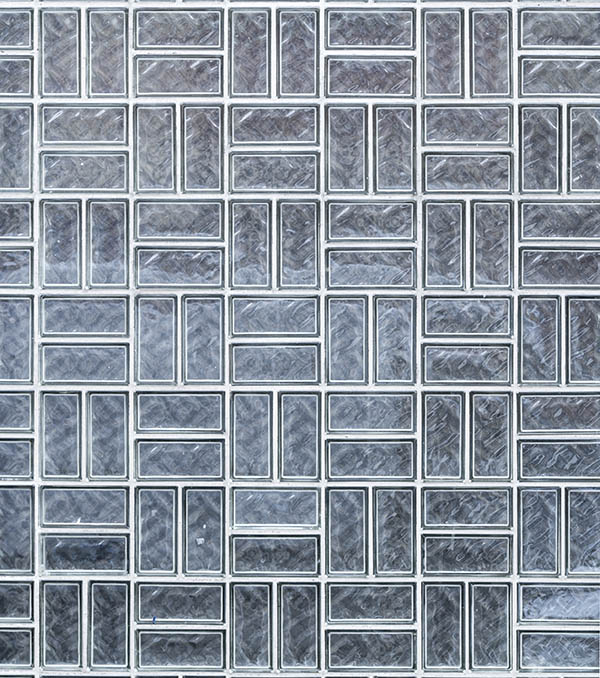
Are These Blocks Good Insulators?
Because these blocks consist of two sides of thick glass with surrounding silicone to make a seal, sunshine and warmth are trapped in the glass’s hollow part. This retains heat, allowing extra warmth in the home after the sun goes down.
Even on a frigid winter days, these blocks retain the sun’s heat, providing good insulation against the cold outside air.
Are Glass-Block Showers Easy to Clean?
They are as easy to clean as regular glass doors or windows. That said, they are easy to clean unless a home has hard water with a lot of minerals. In this case, regular cleaning and using solutions for hard water stains are good ideas.
Can You Replace Just One Block?
It is possible to replace one block using the instructions above to remove it without demolishing it. Always check with a local dealer before taking on this job, as they may have additional instructions to avoid breakage and provide additional safety measures.
Can You Break A Block Type Window?
If a burglar wanted to break into your home, they could use a hammer or heavy tool to break blocks, but it would take some time to break the entire window and make a lot of noise.
Depending on the thickness of the blocks, they are not easily broken. If someone rams a thick, metal gas line into the basement’s blocks, it’s likely to break. Under everyday use the blocks will not break unless damaged intentionally.
Are Glass-Blocks Load Bearing?
Never use a glass block wall or window as a load-bearing element. They may not come crashing down immediately, depending on the weight, but they will crack, and eventually, the wall or window will collapse.
Only use approved load-bearing materials in designated areas of a home or building according to the local building inspection requirements.

